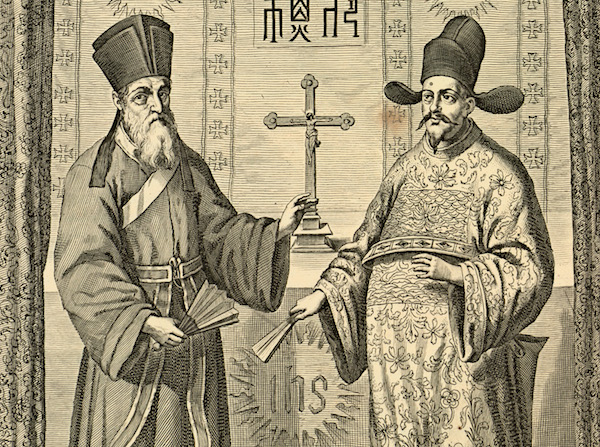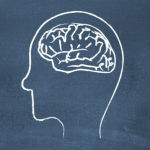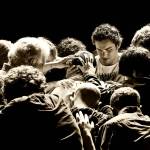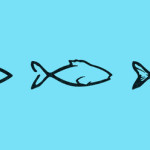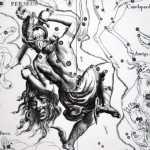Scientific Geniuses and Their Jesuit Collaborators
by Andrew Kassebaum
Filed under Christianity and Science
Herbert Butterfield, the influential twentieth-century historian, identified the Scientific Revolution as “one of the great episodes in human history,” which, along with the rise of the empires of Alexander the Great and ancient Rome, deserves a place “amongst the epic adventures that have helped to make the human race what it is.”1 Numerous Catholic scientists, both laymen and churchmen alike, made valuable contributions to science before, during, and after the Scientific Revolution.
The scientists and mathematicians of the Jesuit Order hold a special place in this story, and a multi-volume work would be required to catalogue their contributions to a variety of scientific fields. In this article, we examine only one aspect of the Jesuit contribution, namely, their collaboration with the greatest minds of the Scientific Revolution.
Jesuit historian Joseph F. MacDonnell discusses the scientific influence of the Society of Jesus in his book Companions of Jesuits: A Tradition of Collaboration, where he writes that “it is a challenge for historians to find a single significant scientist of the sixteenth, seventeenth and eighteenth centuries who was not in some way involved with Jesuits and their colleagues: as students, as teachers, as relatives, as collaborators, as adversaries, as rivals or simply as personal friends.”2
The Jesuits had a close and often complex relationship with Galileo Galilei (1564-1642). While the Galileo Affair holds a prominent place in the history of science, the relationship between Galileo and the Church is more nuanced than often presented in standard histories. The same can be said of the relationship between the Jesuits and Galileo.
While the Jesuits often embraced Aristotelian science and the Tychonic model of the solar system, they still influenced Galileo in important ways. The historian William Wallace, for instance, has shown that many of Galileo’s views were inspired by several Jesuits teaching at the Roman College.3
After Galileo described his observations of the Moon and the Medicean Stars in his Starry Messenger of 1610, the Jesuits confirmed his discoveries. Furthermore, Galileo’s interest in the study of falling bodies originated with the Jesuit Niccolo Cabeo (1586-1650).4 Another Jesuit, Honore Fabri (1608-1688), was the first to explain Galileo’s experiment demonstrating equal time for falling bodies.5
Galileo’s lifelong friendship with the Jesuit astronomer and mathematician Christopher Clavius (1538-1612) began in 1587.6 Clavius, who introduced plus (+) and minus (-) signs to Italy,7 and is remembered for his work on the Gregorian calendar, was a great influence on the Father of Modern Science. In 1588, Galileo wrote a letter of admiration to Clavius, in which he also inquired about a center-of-gravity demonstration.8 A letter from Clavius brought Galileo enough joy to occasion an immediate recovery from a sickness that required Galileo to be bedridden.9
Another close collaborator with the Jesuit Order was Johannes Kepler (1571-1630), whose laws of planetary motion hold a special place in the history of scientific discovery. When Kepler found himself in financial difficulty and lacking a telescope of his own, the Jesuit mathematician Paul Guldin (1577-1643) encouraged fellow Jesuit Niccolo Zucchi (1586-1670) to provide Kepler with the needed instrument. Kepler, who was very appreciative of the gift, dedicated his last book to Guldin.10 The dedication reads:
“To the very reverend Father Paul Guldin, priest of the Society of Jesus, venerable and learned man, beloved patron. There is hardly anyone at this time with whom I would rather discuss matters of astronomy than with you. Even more of a pleasure to me, therefore, was the greeting from your reverence which was delivered to me by members of your order who are here. Fr. Zucchi could not have entrusted this most remarkable gift – I speak of the telescope – to anyone whose effort in his connection pleases me more than yours. Since you are the first to tell me that this jewel is to become my property, I think you should receive from me the first literary fruit of the joy that I gained from trial of this gift.”11
This dedication from Kepler to Guldin came at the end of a long history of friendship with the Order. When Kepler was banished from the University of Graz, after a decree from the Emperor of Austria, the Jesuits Decker, Lang, and Guldin interceded on his behalf. The Jesuits at the college at Ingolstadt assumed responsibility for the publication of Kepler’s Almanac, after the scientist was unable to get it printed.12
The influence and encouragement flowed in both directions. For instance, Jesuit missionaries in China sought out his expertise on difficult mathematical problems, and Kepler encouraged the astronomical work of Zucchi.
The Jesuits also influenced Kepler’s fellow countrymen, Gottfried Leibniz (1646-1716) and Otto von Guericke (1602-1686). In a 1703 letter to Bernoulli, Leibniz attributed his original interest in mathematics to the writings of the Jesuits Clavius, St. Vincent, and Guldin.13 Indeed, Leibniz credits Gregory St. Vincent (1584-1667) as one of the founders of analytic geometry.14 After a meeting with Jesuit Chinese missionaries, Leibniz sent a suggestion for explaining the Trinity to their soon-to-be Chinese hosts.15
Guericke, who invented the air pump, was a friend and correspondent of the Jesuit Gaspar Schott (1608-1666). “It was Schott’s publication of von Guericke’s research,” writes Macdonnell, “that stimulated Huygens and Boyle as well as others to extend the experiments and thus to improve the vacuum pump.”16 Schott was also the first to make Boyle’s subsequent investigations of the air pump known in Germany.17
As suggested above, the Jesuits also greatly influenced members of the Huygens family. The Jesuit Francois d’Aguilon (1567-1617) composed a work entitled The Six Books of Optics, which not only influenced Christiaan Huygens (1629-1695), but also the mathematician Girard Desargues (1591-1661), who is credited as one of the founders of projective geometry.
The Six Books of Optics, which was illustrated by Peter Paul Rubens, was praised by Constantijn Huygens, Christiaan’s father. Constantijn, who thought The Six Books of Optics was the best book on geometrical optics he had ever read, compared d’Aguilon to Plato, Eudoxus, and Archimedes.18
The Jesuit influence was not limited to Continental scientists, but extended to important thinkers in England as well. The Jesuit Francesco Maria Grimaldi (1618-1663) discovered the diffraction of light and published his findings in 1665,19 and Isaac Newton became interested in optics as a result of Grimaldi’s work.
Newton first learned of the discoveries of Grimaldi through Fabri.20 Robert Hooke (1635-1703) performed experiments with diffraction after reading of Grimaldi’s discoveries in the Philosophical Transactions of the Royal Society.21 Hooke also translated the first treatise on lighter-than-air flight, which was written by the Jesuit Francesco Lana de Terzi (1631-1687), and presented Terzi’s plan to the Royal Society.22
The Englishman Robert Boyle (1627-1691) also appreciated the work of the Jesuits:
“Among the Jesuits you know that Clavius and divers others, have as prosperously addicted themselves to mathematics as divinity. And as to physics, not only Scheiner, Aquilonius, Kircher, Schottus, Zucchius and others, have very laudably cultivated the optical and some other parts of philosophy, and [also did] Ricciolus himself, the learned compiler of that voluminous and judicious work the Almagestum Novum.”23
Similar histories could be written for Cassini, Fermat, Descartes, Harvey, and Torricelli. The influence of the Jesuits on the illustrious thinkers of the Scientific Revolution is only one chapter in the long story of their incredible contributions to science. These contributions are only now beginning to be fully appreciated by historians of science.
Related Posts
Notes:
- Butterfield, Herbert. The Origins of Modern Science. New York: The Free Press, 1965.191. ↩
- MacDonnell, Joseph. Companions of Jesuits: A Tradition of Collaboration. Fairfield, CT: Fairfield University Press, 1995.65. ↩
- See Wallace’s Galileo and His Sources: The Heritage of the Collegio Romano in Galileo’s Science and Galileo’s Early Notebooks, among other works. ↩
- Jesuit Geometers, 51. ↩
- Jesuit Geometers, 59-60. ↩
- Jesuit Geometers, 51. ↩
- “Christoph Clavius.” Complete Dictionary of Scientific Biography. Vol. 3. Detroit: Charles Scribner’s Sons, 2008. 312. ↩
- Companions of Jesuits, 82. ↩
- Jesuit Geometers, 53. ↩
- MacDonnell, Joseph. Jesuit Geometers: A Study of Fifty-Six Jesuit Geometers During the First Two Centuries of Jesuit History. St. Louis: The Institute of Jesuit Sources, 1989.20. ↩
- Companions of Jesuits, 86. ↩
- Fulop-Miller, Rene. The Power and Secret of the Jesuits. New York: The Viking Press, 1930.400. ↩
- Companions of Jesuits, 93. ↩
- Jesuit Geometers, 30. ↩
- Jesuit Geometers, 56. ↩
- Companions of Jesuits, 75. ↩
- “Gaspar Schott.” Complete Dictionary of Scientific Biography. Vol. 12. Detroit: Charles Scribner’s Sons, 2008. 210. ↩
- Jesuit Geometers, 9-10. ↩
- “Francesco Maria Grimaldi.” Complete Dictionary of Scientific Biography. Vol. 5. Detroit: Charles Scribner’s Sons, 2008. 543. ↩
- “Fabri, Honoré, or Honoratus Fabrius.” Complete Dictionary of Scientific Biography. Vol. 4. Detroit: Charles Scribner’s Sons, 2008.506. ↩
- Jesuit Geometers, 52. ↩
- Companions of Jesuits, xv. ↩
- Jesuit Geometers, 77. ↩
Note: Our goal is to cultivate serious and respectful dialogue. While it's OK to disagree—even encouraged!—any snarky, offensive, or off-topic comments will be deleted. Before commenting please read the Commenting Rules and Tips. If you're having trouble commenting, read the Commenting Instructions.




